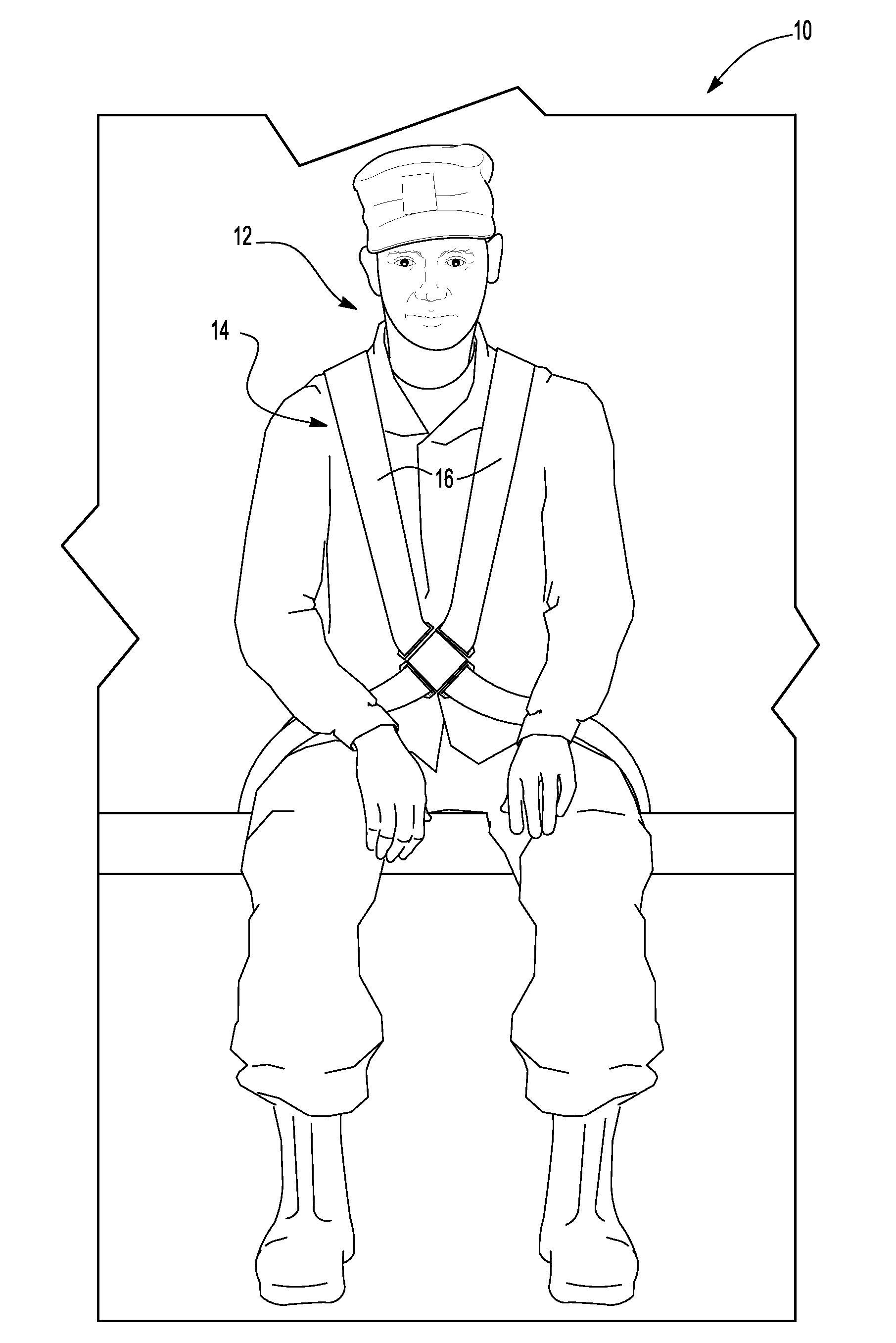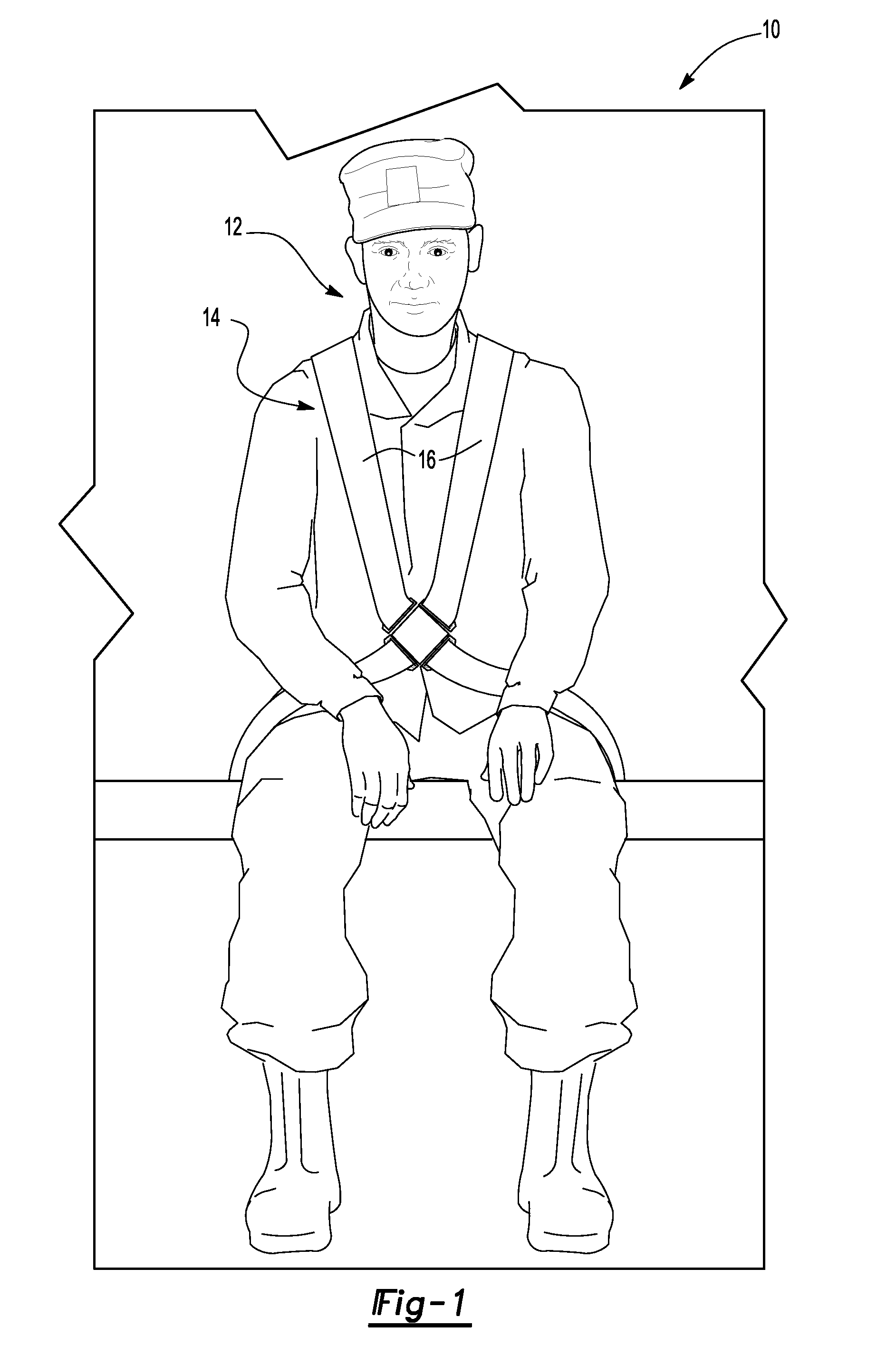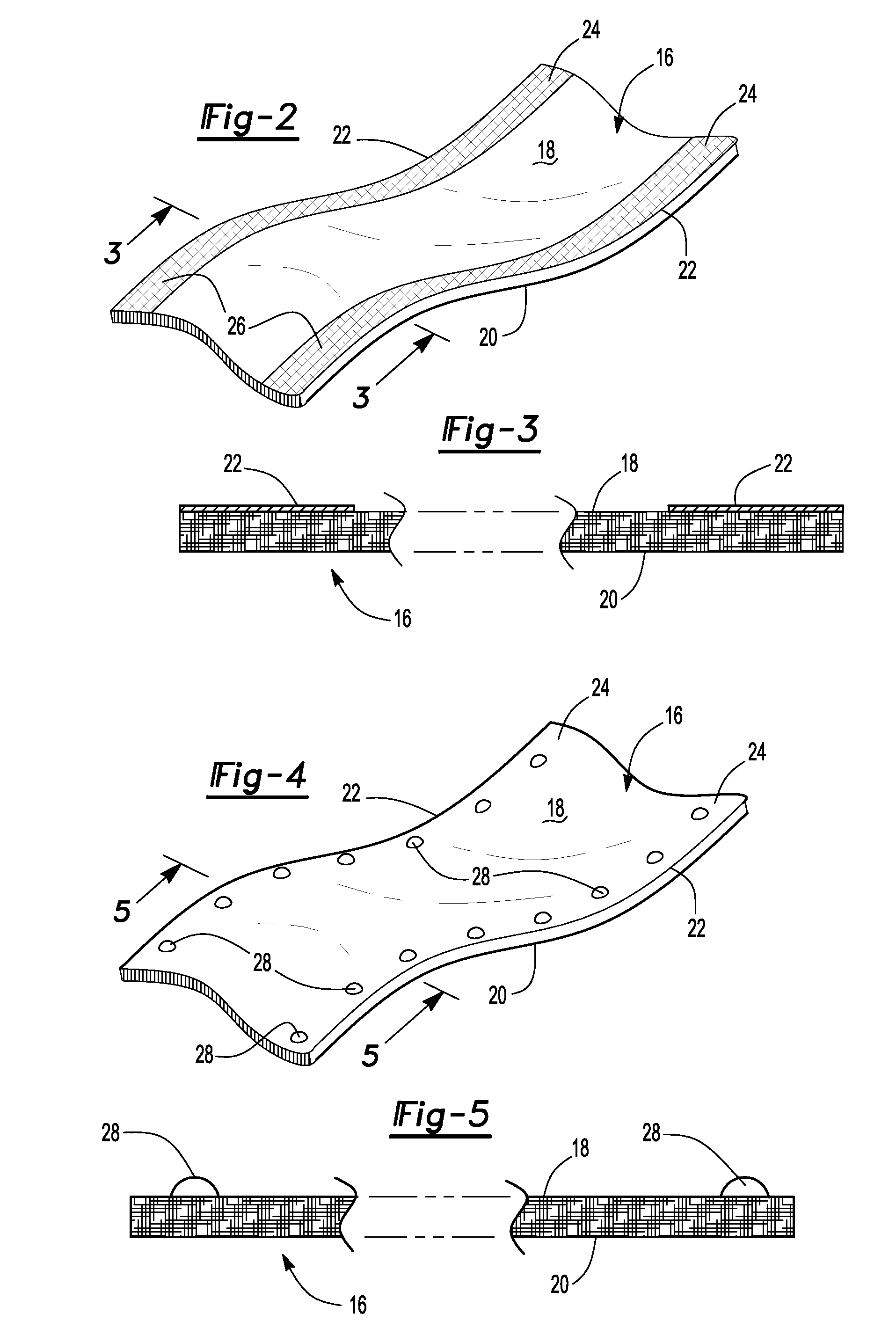Personnel restraint seat belt
a seat belt and person-restraint technology, applied in the field of person-restraint seat belts, can solve the problems of affecting the cognitive reasoning ability of temporarily incapacitated the occupants of the vehicle, and oftentimes emergency situations, and achieve the effect of quick cutting and convenient identification of the seat belt web
- Summary
- Abstract
- Description
- Claims
- Application Information
AI Technical Summary
Benefits of technology
Problems solved by technology
Method used
Image
Examples
Embodiment Construction
[0041]With reference first to FIG. 1, a military vehicle 10 is illustrated diagrammatically with personnel, e.g. a soldier 12, seated within the vehicle 10. The soldier 12 is held to the vehicle by a personnel restraint seat belt 14. In the conventional fashion, the seat belt 14 includes elongated webs 16 which extend around the soldier 12 and are releasably locked to the vehicle 10 by release buckle 17.
[0042]With reference now to FIGS. 2 and 3, a portion of the seat belt web 16 is shown and includes a front surface 18 which faces forwardly of the soldier 12, a rear side 20 which faces the soldier 12, and two side edges 22. The web itself is flat and flexible and may be constructed of any suitable material, such as woven fabric, a synthetic material, or the like.
[0043]Still referring to FIGS. 2 and 3, in order to differentiate the web 16 for the restraint seat belts from other types of belts that may be present within the vehicle 10, a distinguishing feature 24 which is used only in...
PUM
 Login to View More
Login to View More Abstract
Description
Claims
Application Information
 Login to View More
Login to View More - R&D
- Intellectual Property
- Life Sciences
- Materials
- Tech Scout
- Unparalleled Data Quality
- Higher Quality Content
- 60% Fewer Hallucinations
Browse by: Latest US Patents, China's latest patents, Technical Efficacy Thesaurus, Application Domain, Technology Topic, Popular Technical Reports.
© 2025 PatSnap. All rights reserved.Legal|Privacy policy|Modern Slavery Act Transparency Statement|Sitemap|About US| Contact US: help@patsnap.com



